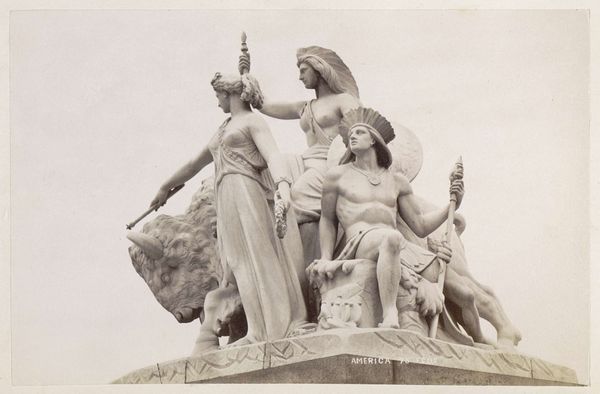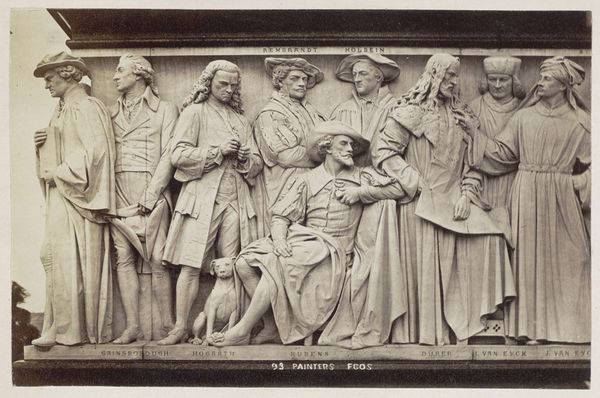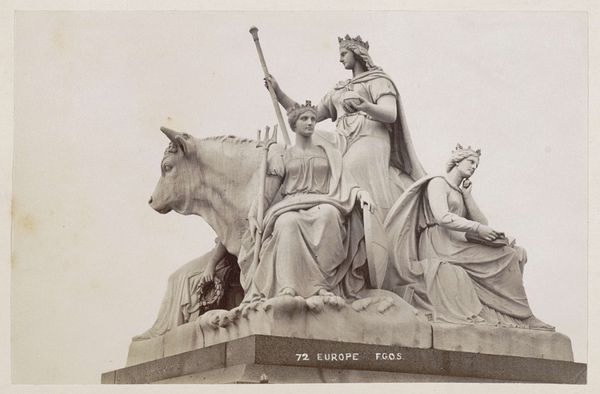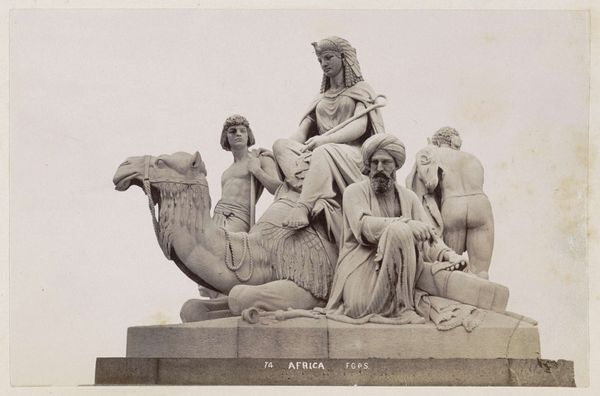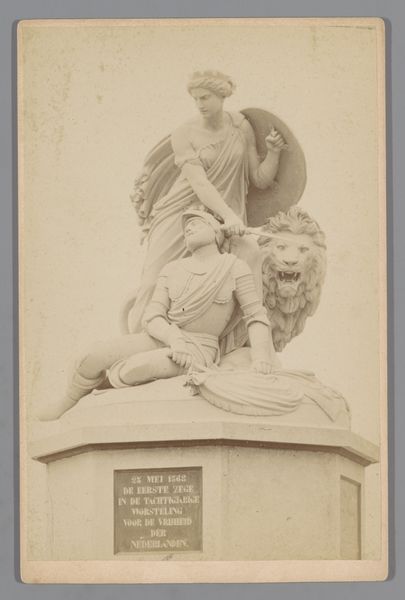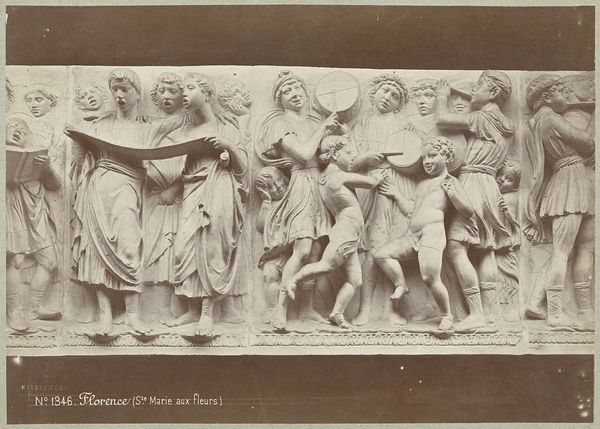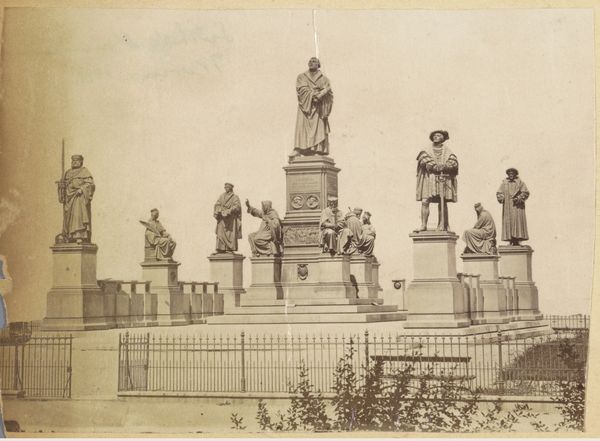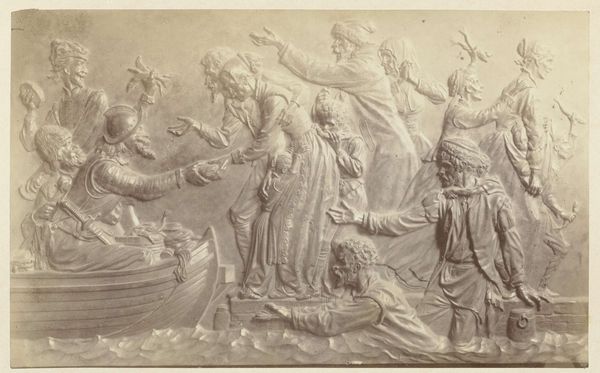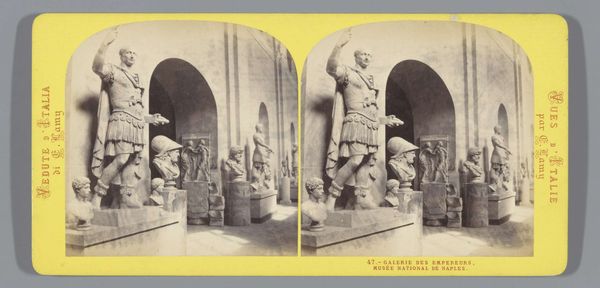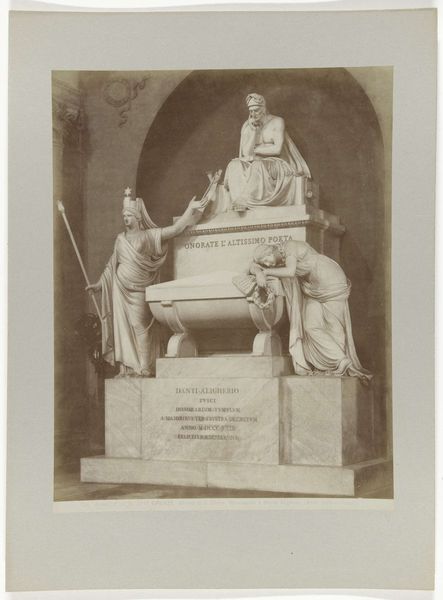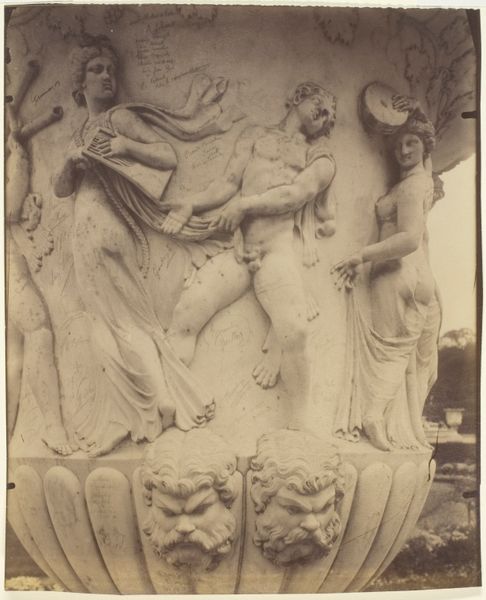
Beeldengroep aan de voet van het Albert Memorial in Londen: Azië 1878 - 1890
0:00
0:00
print, photography, sculpture
#
portrait
# print
#
sculpture
#
photography
#
sculpture
#
orientalism
#
academic-art
Dimensions: height 100 mm, width 150 mm
Copyright: Rijks Museum: Open Domain
Editor: This photograph captures the sculpture "Asia," part of the Albert Memorial in London, dating from between 1878 and 1890. I find the depiction of different Asian figures alongside the central female figure riding the elephant particularly striking, especially with the photographic style making the figures appear as classical statues. How do you interpret this work's symbolism? Curator: The photograph immortalizes a grand statement, a British interpretation of Asia as exotic and subjugated. The central female figure atop the elephant evokes a kind of ownership. But the symbolic power extends beyond the immediately visible. Editor: How so? Curator: Consider the individual figures. What cultural narratives do they trigger? How do they represent different facets of "Asia" through a Western lens? What is highlighted, what is omitted? This encoding serves specific political and social functions. Notice how the woman at the top has an elephant, symbolizing India, her pose itself is commanding. Editor: It seems like a very constructed image, a way of presenting a vision of Asia rather than depicting any real, lived experience. So there's almost a sense of fantasy at play? Curator: Precisely. It taps into a shared visual language, reinforcing power dynamics. Consider the historical context of the British Empire at the time. How did these types of images justify colonial expansion? These monuments are complex vessels of meaning, revealing the worldview of a specific era. Editor: I never really thought about how sculpture and photography can tell lies like this. Thank you so much, I will need time to process that.
Comments
No comments
Be the first to comment and join the conversation on the ultimate creative platform.
